A photo essay on the wild trip that is the urs of Lal Shahbaz Qalandar in Sehwan, Pakistan. Includes a short guide on visiting the next festival.

Desert sun scorches and sweaty backs drip.
Acid trip buses fly down a dusty highway as men sing and dance on their rooftops. Red flags crackle in gusts of wind. Bands of pilgrims surge through congested streets.

Typical Pakistani tripper bus
Mustachioed men hawk coconut shavings teeming with flies. Determined women in chador pull disgruntled toddlers through unforgiving seas of legs. Drums, drums, drums everywhere; they never cease their tireless beat.
Rising above the melee, almost stoic if not for the multicolored fairy lights hanging from its walls, is the center of it all: the shrine of Lal Shahbaz Qalandar.

The Qalandar’s shrine rising above the madness
The urs of Lal Shahbaz Qalandar in Sehwan, Pakistan
Every year for at least three days—unofficially more—hundreds of thousands visitors descend upon the Sufi shrine in the small town of Sehwan, Pakistan. In 2017, more than two million people attended in defiance of the February terrorist bombing of the shrine.
Pilgrims come to pay their respects to the Qalandar, a poet and one of the most important Sufi saints in Pakistan’s history. The loving music and poetry of Sufis propelled Islam throughout South Asia hundreds of years ago, and Lal Shahbaz is one of the most venerated of all.
He welcomed those from all religions, castes, and creeds, and the tradition continues. Muslims are not the only ones coming to see Lal Shahbaz’s tomb; Hindus also embark on this Sufi yatra, and the shrine is open to anyone of any faith.
Celebrations begin on the 18th of Sha’aban, a month in the lunar-based Islamic calendar, marking the death date of Lal Shahbaz. Though it may seem odd to celebrate someone’s death, for his followers, it is a day of joy: the day Lal Shahbaz died is the day his soul escaped the cycle of life and rejoined Allah in heaven.
But unlike other religious happenings in Pakistan, this death day festival feels just as much like an Islamic version of Burning Man as it does a religious pilgrimage.
The urs of Lal Shahbaz Qalandar in photos
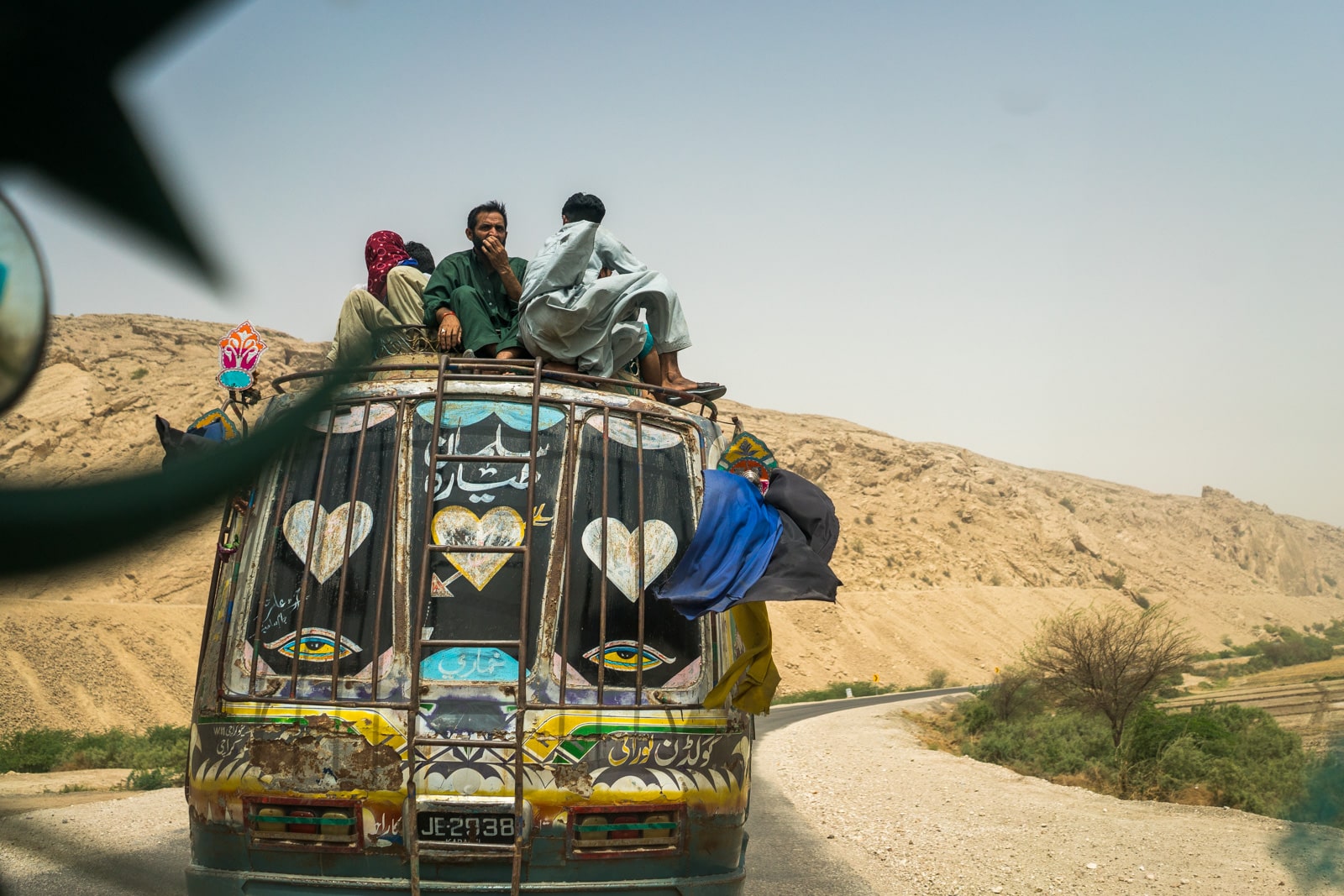
The road to Sehwan fills with vehicles on all the days surrounding the festival. Bus seats are in high demand, so many people end up riding rooftops to the urs.

(Almost) standstill traffic begins well before you enter Sehwan itself.
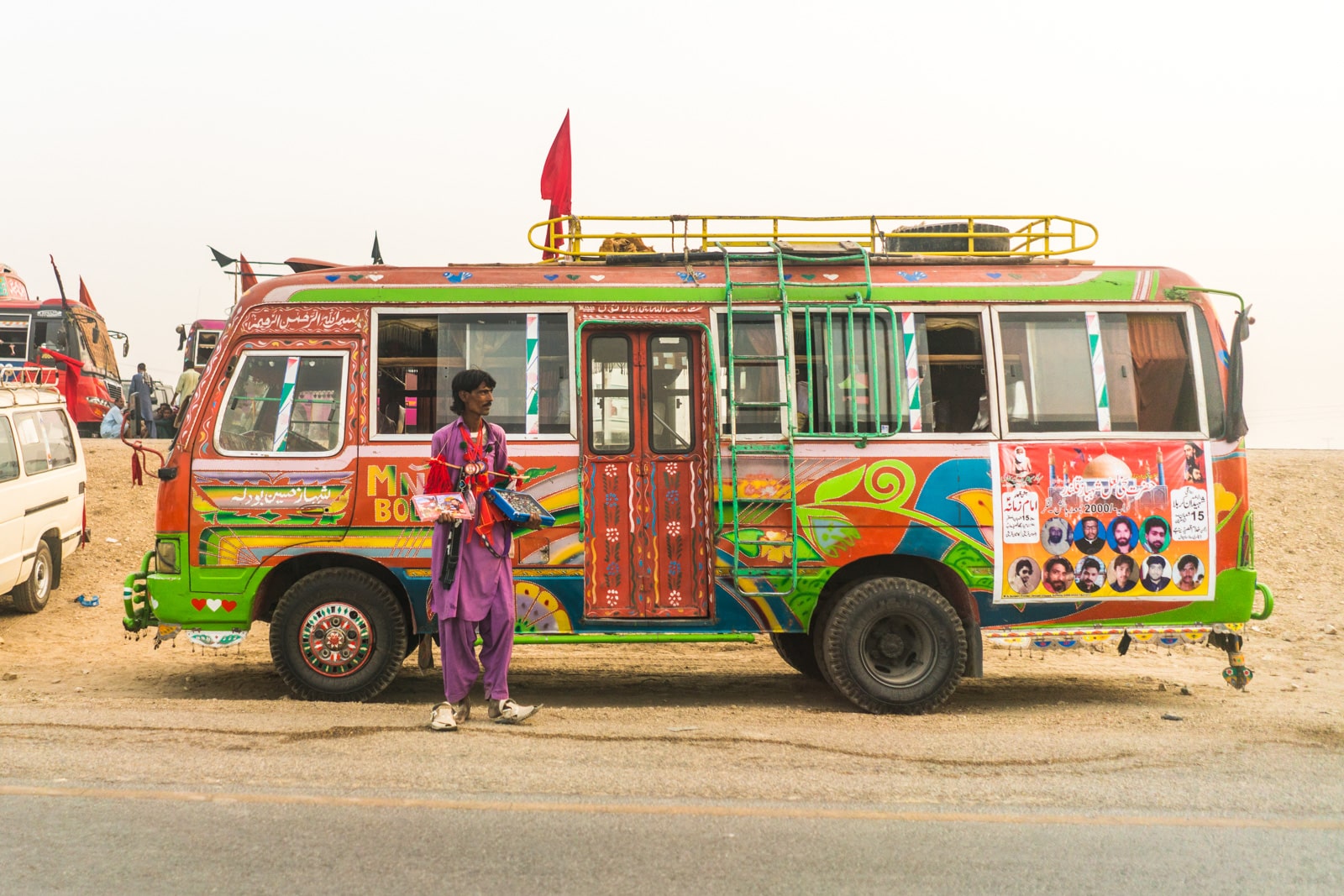
Many groups of pilgrims opt to park buses along the highway… and camp in parks, parking lots, and between buses.
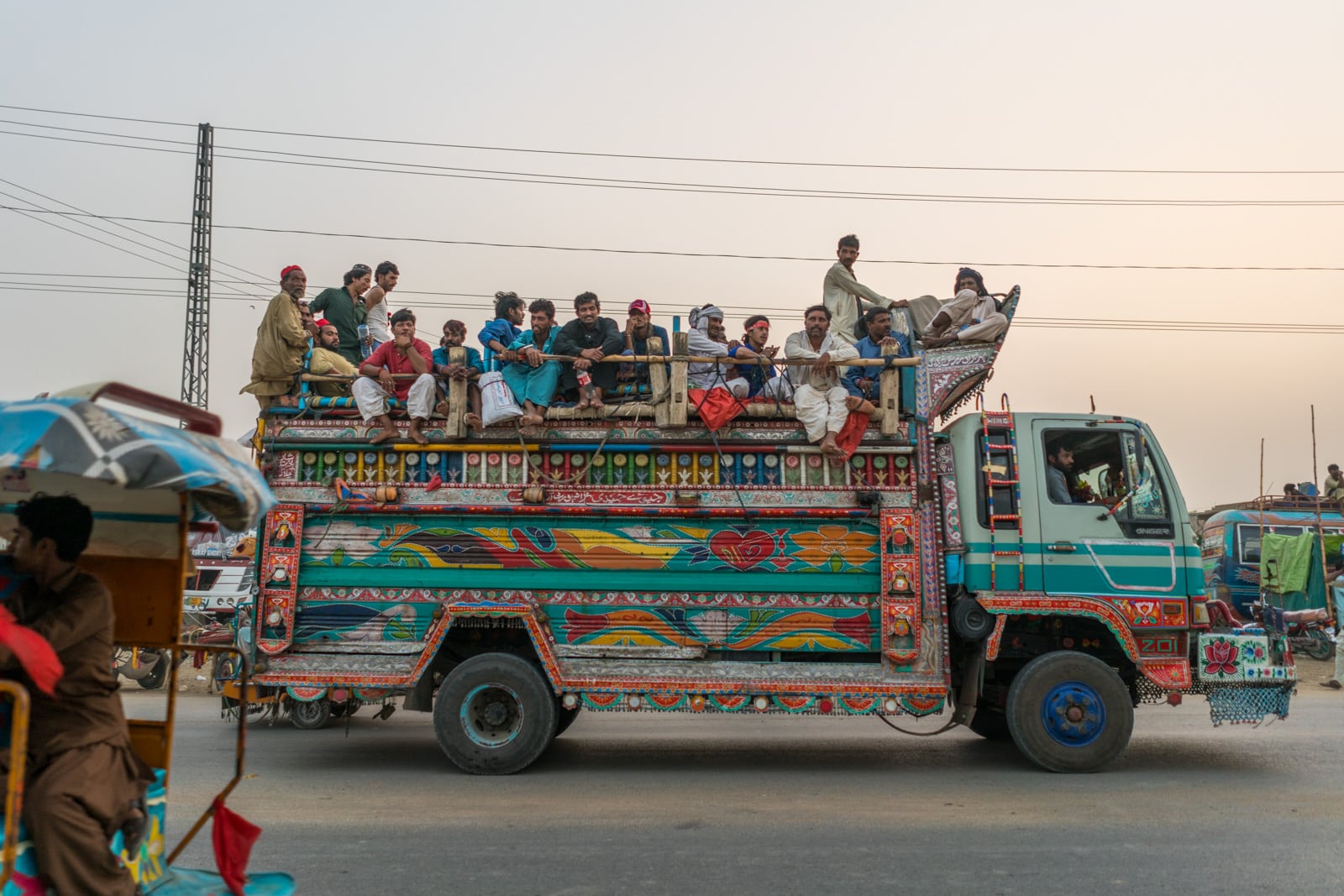
… not that buses are the only form of transport into and out of Sehwan!

Case in point.
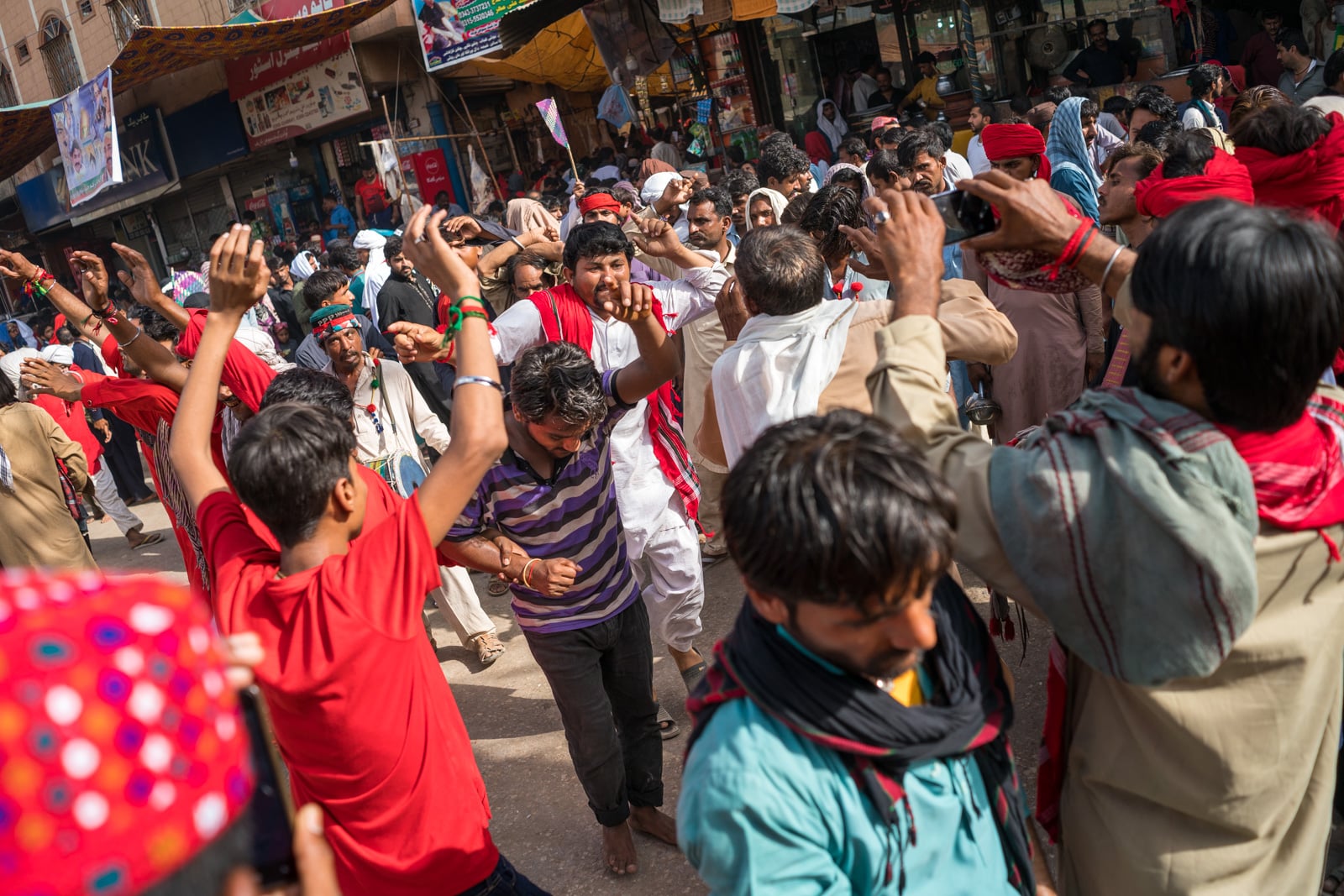
Sehwan town itself is completely and most utterly packed with people once the festival begins.
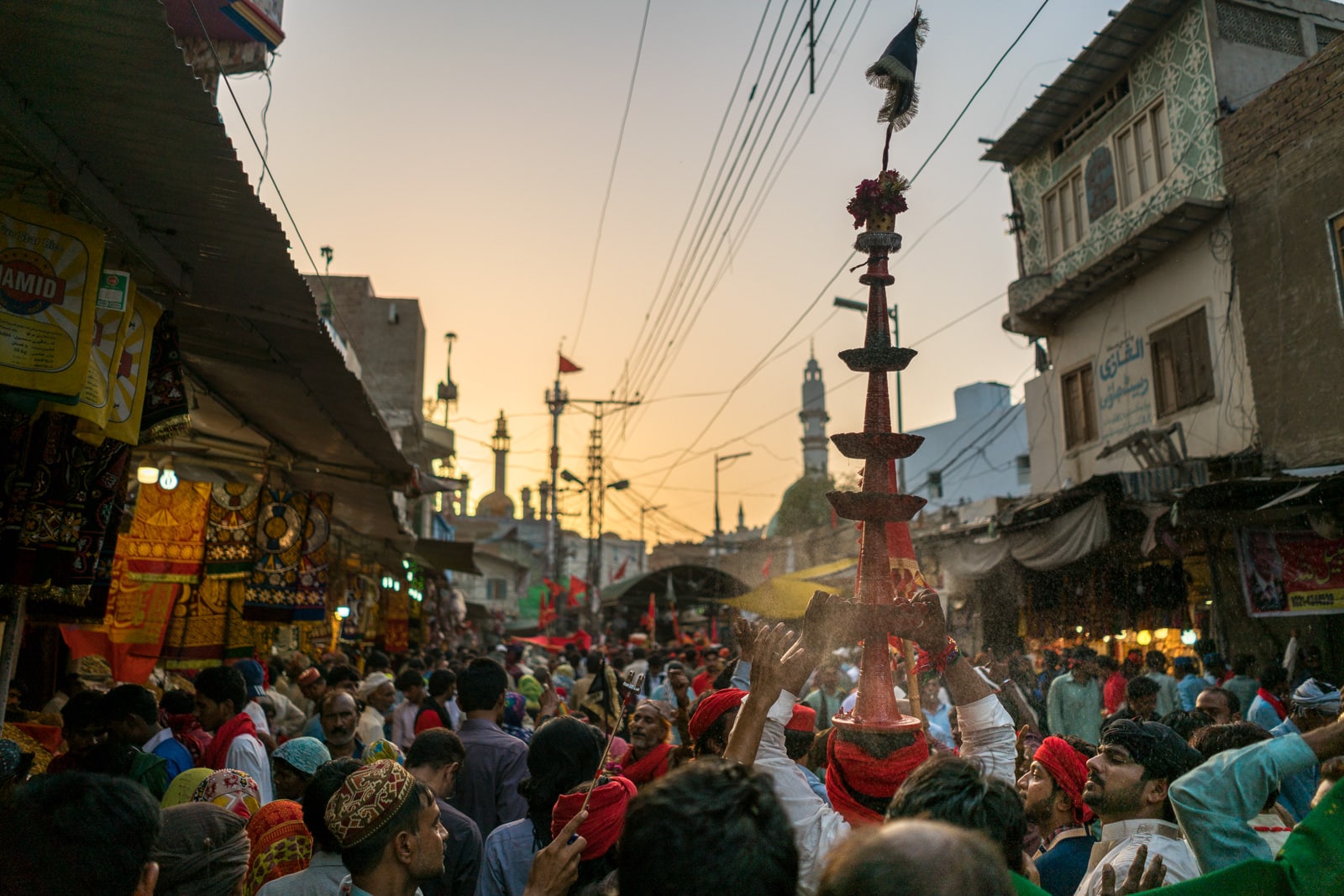
…. particularly in the cool evenings.

All kinds of people can be found on the town’s streets, from men selling goats for slaughter…

… to crazy (and sometimes creepy) fakirs…

… to sweet vendors selling treats to be handed out inside the shrine…

… to boys selling curious photo portraits…

… to gangs of rather determined beggars.
[bscolumns class=”one_third one_third_first”]



Red-clad Sufis flock from all over Pakistan to visit…
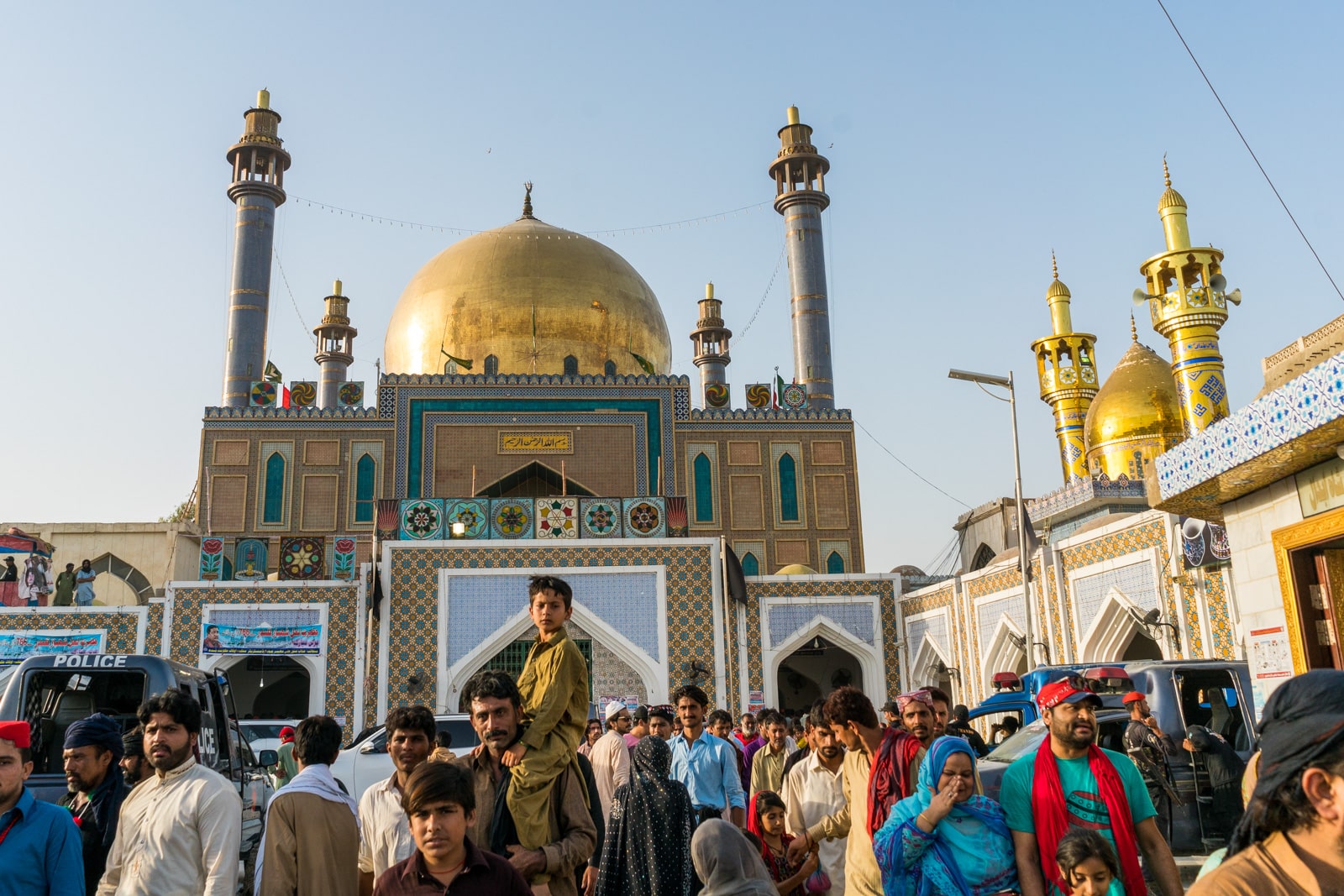
… the shrine of their saint, Lal Shahbaz Qalandar.

It gets crowded…

… really crowded…
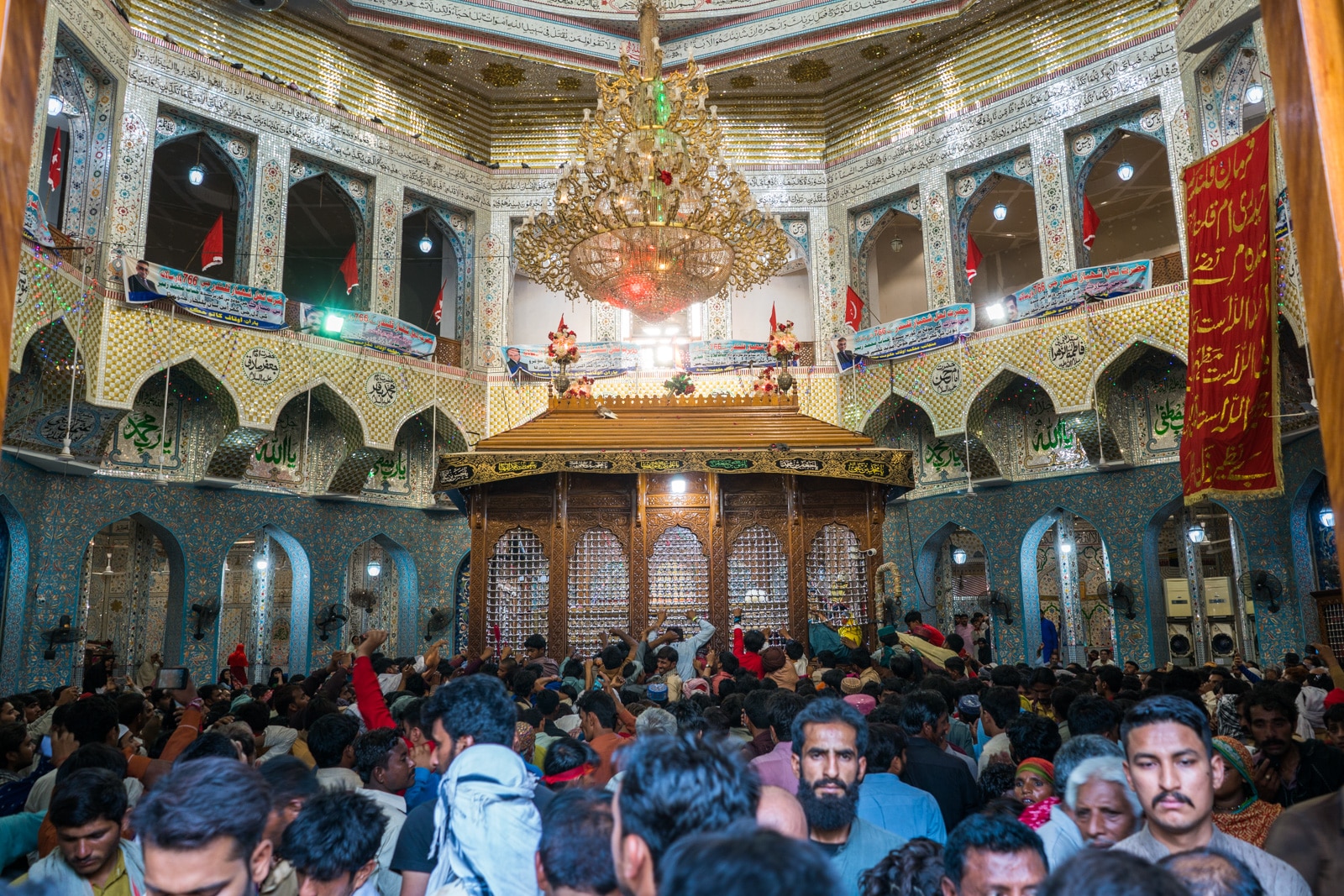
… really, really crowded. (And this was a more quiet time of day.)

Seas of devotees surge forward in the hopes of touching the tomb of Lal Shahbaz

Some wait at the base of the tomb for hours, praying quietly

Others break through to have their moment with the cloth-clad tomb
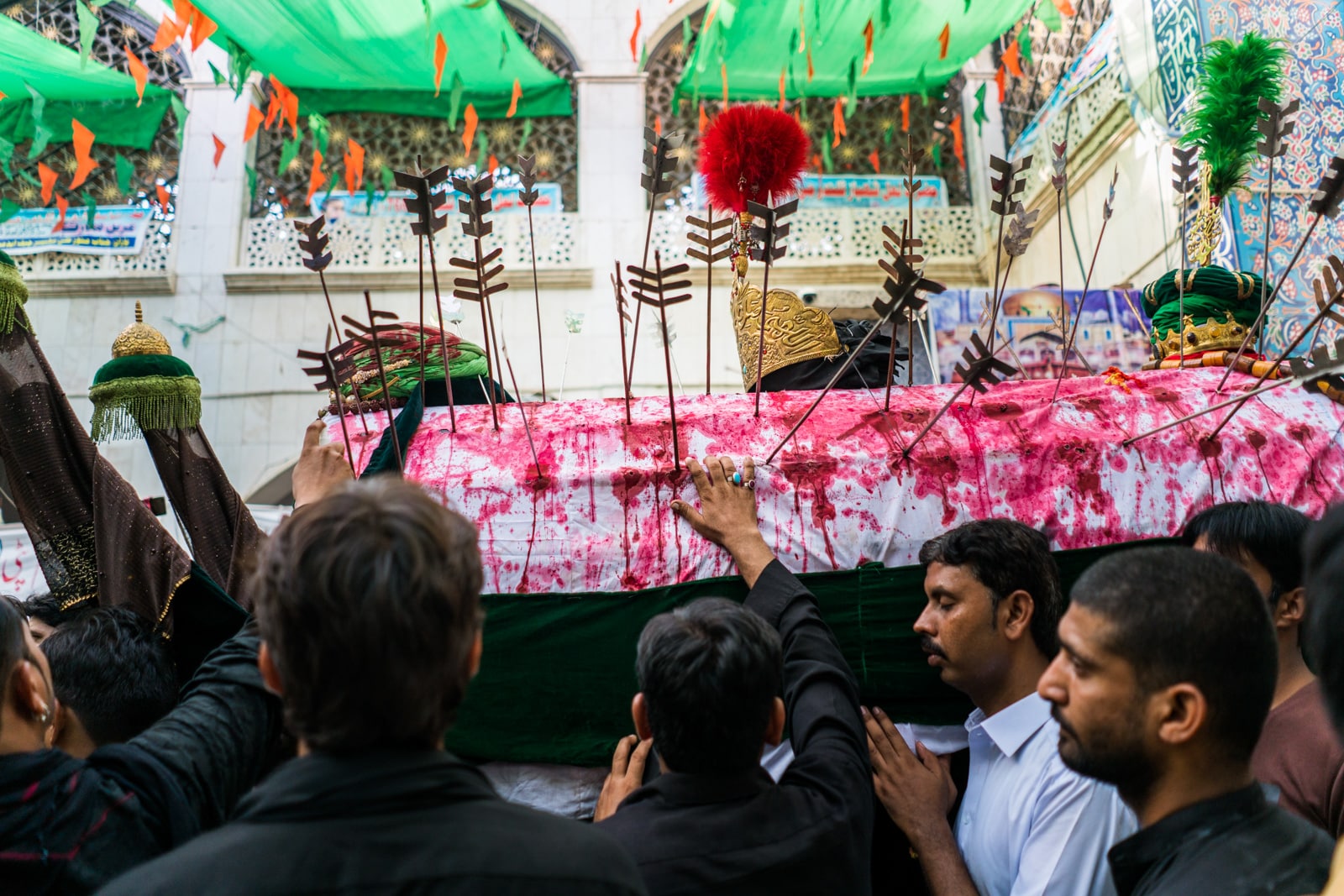
As the seas churn inside, Shia Muslims sometimes perform rituals outside, such as carrying the symbolic arrow-riddled coffin of one of their Imams…

… and beating their chests as a form of self-flagellation. Normally this ritual is performed with sharp chains, but dangerous objects are restricted inside the shrine.
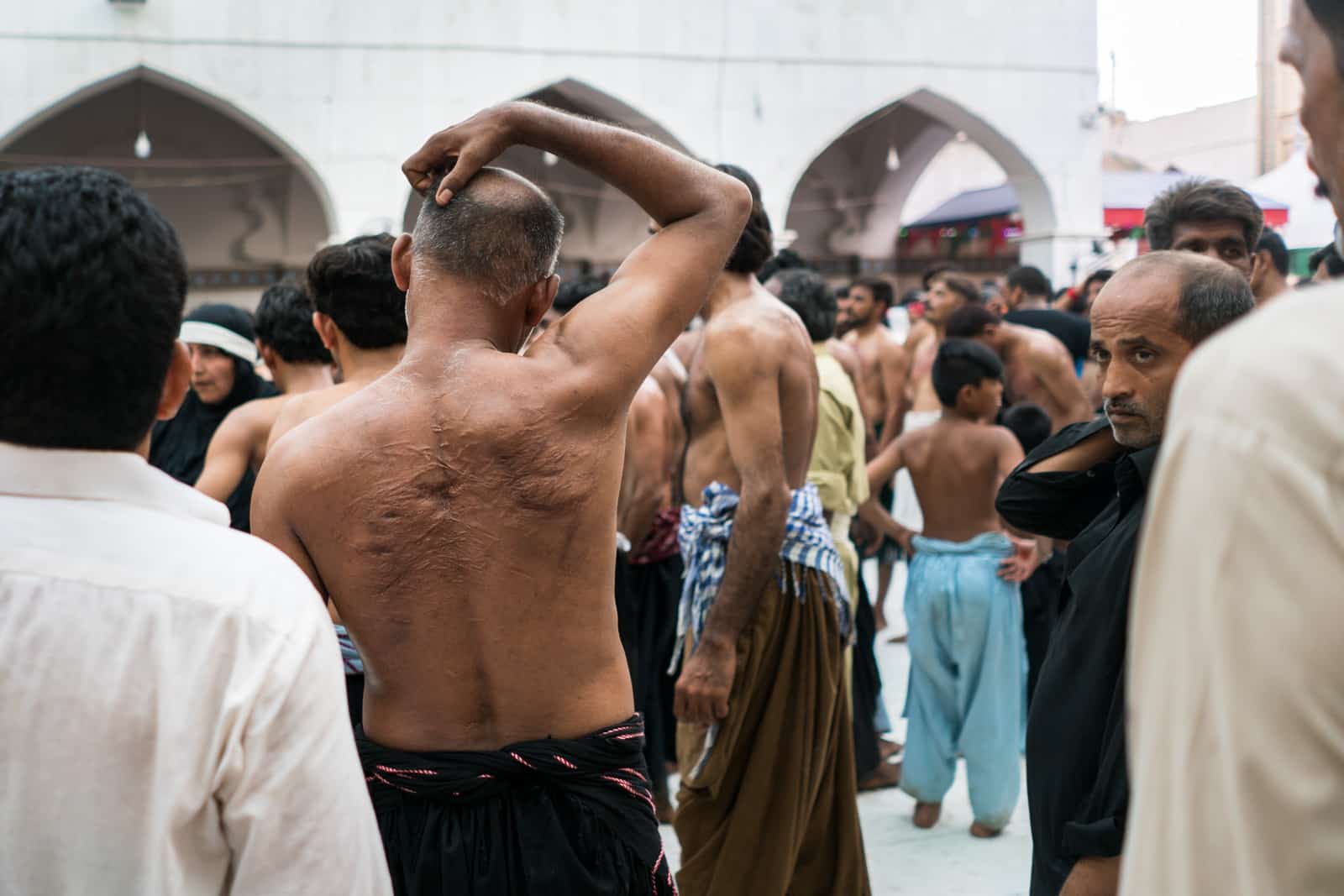

The coffin makes its rounds ’round Lal Shahbaz Qalandar’s tomb
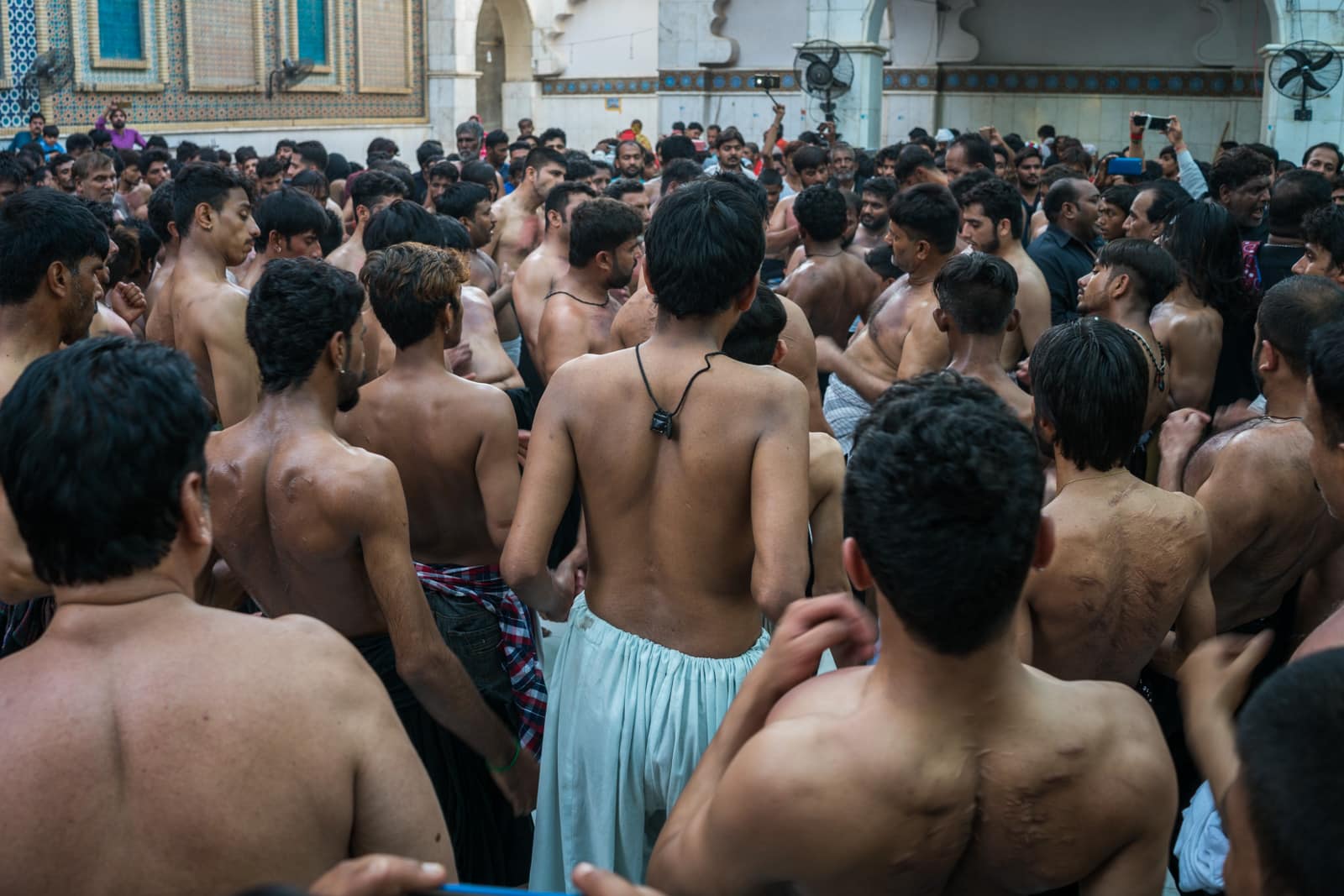
Shias (and Sufis) are a religious minority often persecuted in Pakistan. But in the tolerant space of the shrine, they are free to practice; bystanders sometimes join hands to create a protective fence around them.

Each day of the festival, as day becomes night, more and more people take to the streets around the shrine.


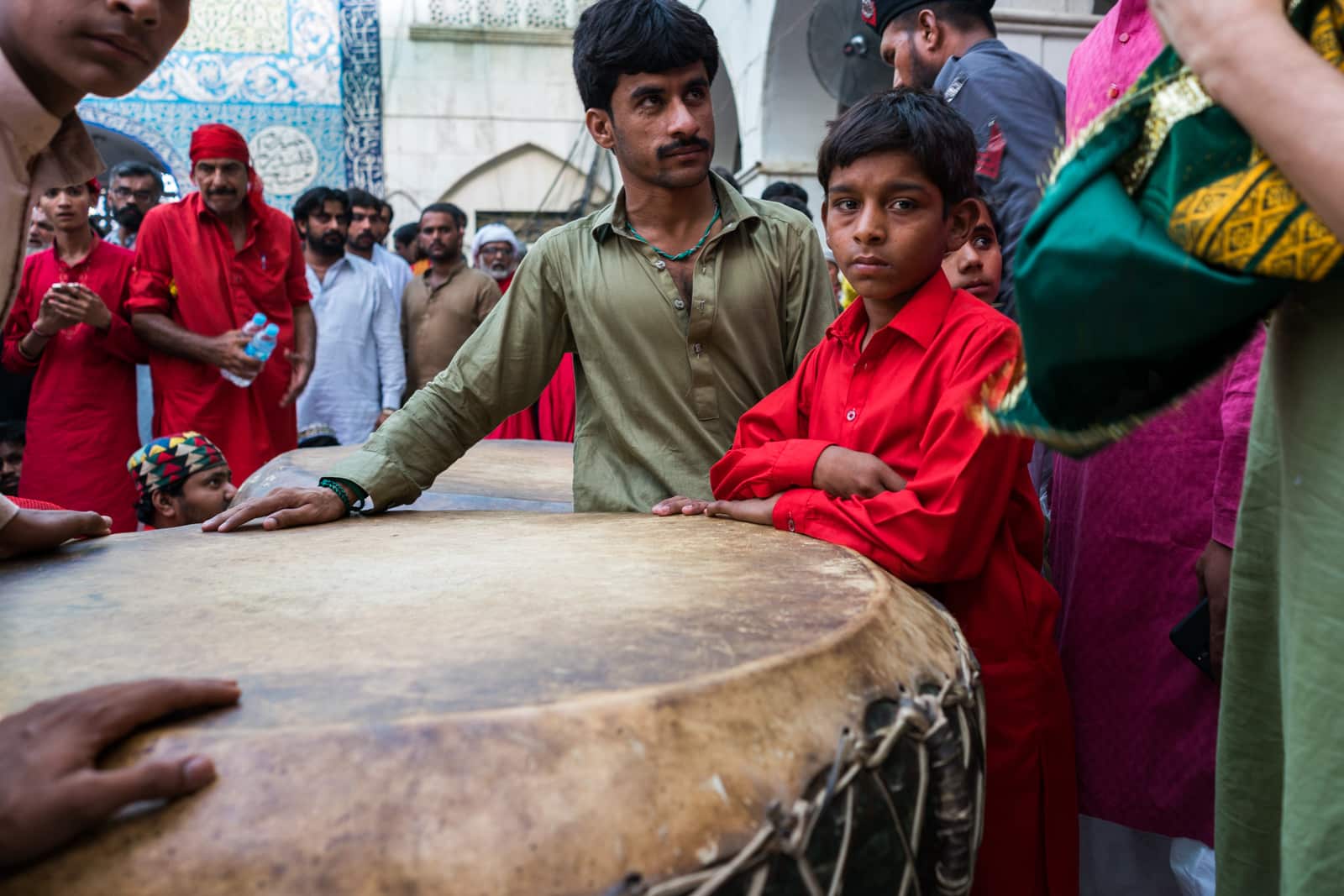
Pilgrims and tourists alike line up to enter the shrine for hours, in the hopes of taking part in the evening’s wild dhamaal.

(Rather than get caught in the mad crunch of men for dhamaal, I opted to watch from the rooftops above. No complaints about this view!)

This is as close to VIP seating as you’ll get around the shrine

Though the frenzy of dhamaal raged on below, I was too preoccupied with the people ON the roof—there were ladies around, for once!

As dhamaal comes to a sweaty close, the masses surge back onto the dark streets of Sehwan

But dhamaal‘s conclusion doesn’t mean the dancing stops!

If there’s one thing for certain, it’s that the dancing never, ever stops at the Urs of Lal Shahbaz Qalandar.

A quick guide to the Urs of Lal Shahbaz Qalandar in Sehwan, Pakistan
Though a wild and enriching experience, traveling to the urs of Lal Shahbaz Qalandar in Sehwan, Pakistan can be quite a hassle. The festival sees far, far too many people squished into one tiny town, and for the next few years, the urs will occur during very hot times of year.
Nevertheless, I highly recommend the experience to any traveler interested in experiencing the frenetic energy of South Asian festivals, or learning more about Sufi culture.
Here’s what you need to know about visiting the urs in the coming years.
When is the urs of Lal Shahbaz Qalandar?
The urs lasts three days (plus or minus however many you wish), and officially begins on the 18 of Sha’aban, a date on the lunar-based Islamic calendar. Here are the Gregorian calendar equivalents of the day in the coming years:
- 2019: April 23
- 2020: April 11
- 2021: March 31
- 2022: March 22
- 2023: March 10
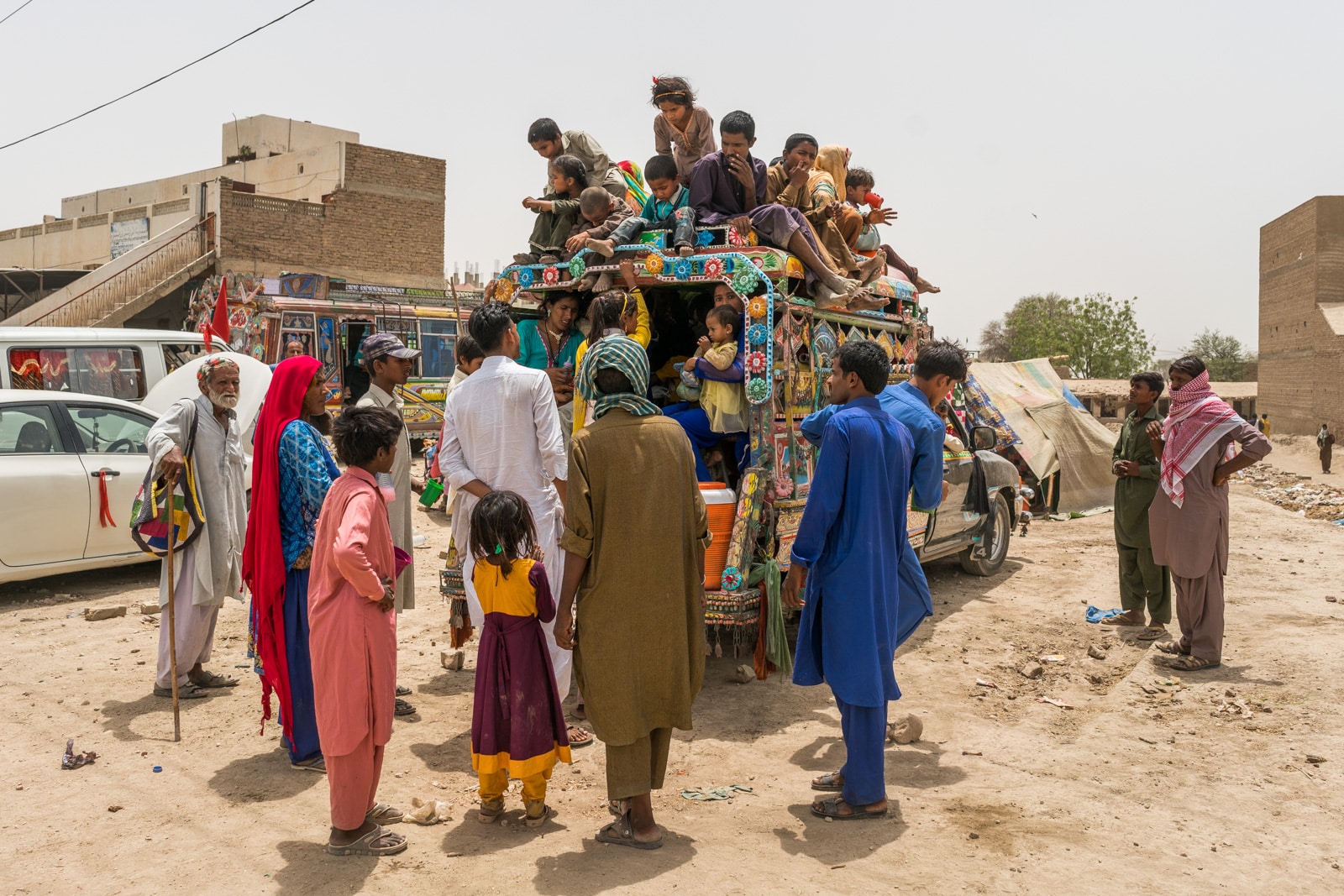
A local family (or three) figuring out how to squish on a truck out of Sehwan
How to reach Sehwan Sharif, Pakistan
By train
Only two trains stop at Sehwan: the Khushal Khan Khattak Express (Karachi – Peshawar, economy seating only) and the Bolan Mail (Karachi – Quetta, economy and AC). If running on time, both arrive in Sehwan Sharif in the middle of the night.
If you have a bit more time—or just can’t get a ticket for either of those trains—Hyderabad is a logical and well-connected city to start your journey. Multiple trains run from the major cities to Hyderabad daily. To reach Sehwan from Hyderabad, you can hire a taxi, or take a local bus for two hours.
Read more: First timer’s guide to train travel in Pakistan
By bus
Sehwan is connected to Karachi by Daewoo, Pakistan’s most reputable bus service. You can find the times of the Karachi – Sehwan bus here; the bus fare is 690 Rs one way.
Otherwise, local buses go from Bhit Shah (2 hours) and Hyderabad (2 hours). Ask around to figure out where the bus stand is wherever you are.
Many pilgrim buses head from nearby towns to Sehwan all throughout the urs, and some are happy to give rides to other visitors for free. If a bus is full, just ask to ride on the roof. You won’t be the only one!
Where to stay in Sehwan Sharif
Ah, now we get to the hard part: accommodation.
Accommodation fills up faster than you can blink during the urs. During the festival, I slept in a variety of places: in a nearby towns, on the roof of an (unfinished) building). Don’t be like me, and try to sort out your accommodation in advance.
In Sehwan
Hotel Sehwan Divine is a pricey option, with double rooms going for around $40 a pop on normal days, but it’s also the only hotel you can book in advance online. Costly as it may be, it is a nice hotel, and its attached (and air conditioned!) Sehwan Restaurant is the most hygienic food option in all of Sehwan. Highly recommended if you’re melting your face off and need a bit of respite during the festival.
Alternatively, you can try Dum Dastagir Resthouse on Dargah Road. Recommended by Tim of Pakistan Traveller, the most comprehensive Pakistan guidebook, it’s close to the shrine, and much more budget friendly. Try calling them at +923072195833 as far in advance as possible.
For ultra budget travelers, you can simply camp out on the roadside—or anywhere with space—or set up a camp/tent inside Lal Bagh Park. Know that you absolutely will not be the only one doing so. Many pilgrims set up their camps inside Lal Bagh. Foreigners will likely be taken in by amused locals, but beware—thieves and pickpockets do roam around the festival. Watch your belongings.
Near Sehwan
Dadu is a town close to Sehwan with some accommodation options. It takes around 45 minutes to drive from Dadu to Sehwan.
Bhit Shah is another town about two hours away, famed for its stunning shrine to another Sufi saint, Shah Abdul Latif Bhttai. During the urs, you’ll see a lot of pilgrims en route to Sehwan sleeping in the shrine’s courtyard (for free).
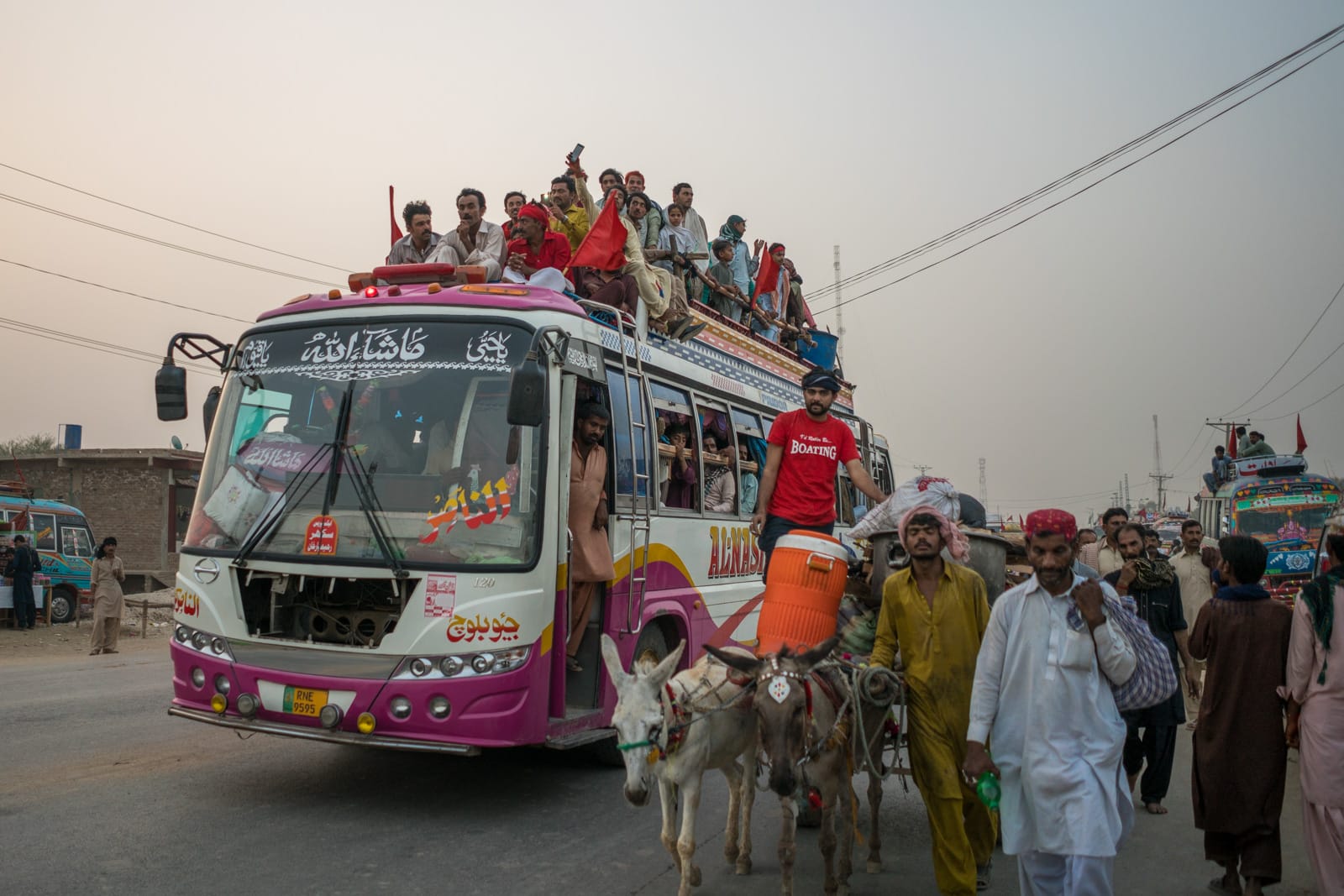
A taste of what’s to come at the urs
Things to know about visiting the urs
So you’ve made it to Sehwan and found a place to sleep (inshallah). Time to dive into the festival! Here are some things you should know about visiting the urs of Lal Shahbaz:
- Dhamaal begins after sunset and the evening namaaz. Dhamaal is the crazy drum and dance trance ritual performed at Sufi shrines. There are 3 days of dhamaal, starting on the 18 Sha’aban.
- Langar, free food, is handed out all over the town. Offerings can range from simple cups of water, to small handfuls of sweets, to juice boxes, to full-on meals of biryani or roti and daal. Feel free to partake, and know that it’s considered extremely rude to refuse langar.
- The line into the shrine is long. Really long. In May, the line was shortest in the mid afternoon, when it was too hot for most people to stand outside. The line is longest around dhamaal in the evening.
- There are separate lines for men and women. Ladies’ line is to the left side.
- No shoes allowed inside the shrine. Try leaving your shoes with a shopkeeper nearby—they’ll be lost to the crowd otherwise.
- You cannot bring bags or cameras into the shrine. Foreigners, you might be able to bring in a camera if you’re politely firm and request it of the security guards at the shrine’s entrance.
- Red is your color. Bright red is the color to wear if you want to dress to impress at the urs.
- Phone signal sucks. Whether it’s because of the massive crowds, or because security forces restrict signals, know that you can’t count on your phone always working. Calls and texts will eventually go through, but data is not to be expected near the shrine. Further away and in neighboring towns, I had 4G with Zong.
- Do NOT take photos or videos of security guards/anything security-related. You will upset a lot of people. I had security come and force me to delete a video of the shrine line I recorded on my phone that had a security guard in it for a brief moment.
Is it safe to visit Sehwan and the urs?
Not to scare you off, but it’s something that must be noted: Sehwan was the target of a massive terrorist attack in February 2017. More than 70 people were killed in the bombing.
What I can guarantee is that the urs of Lal Shahbaz in Sehwan is everything your government advises you to stay away from: multiple kinds of oft-targeted religious minorities (Sufis and Shias), large crowds, places with a history of attacks.
Whether or not you want to take the risk is your decision—I’m just here to inform you. Know that security is taken very seriously during the urs.
There are police and ISI all throughout Sehwan. Visitors to the shrine must leave all bags behind and go through metal detectors and pat-downs. The police are not afraid to use force to quell crazed crowds (as I saw).
There’s no guaranteeing anyone’s safety, but I’d say it’s a calculated risk worth taking.
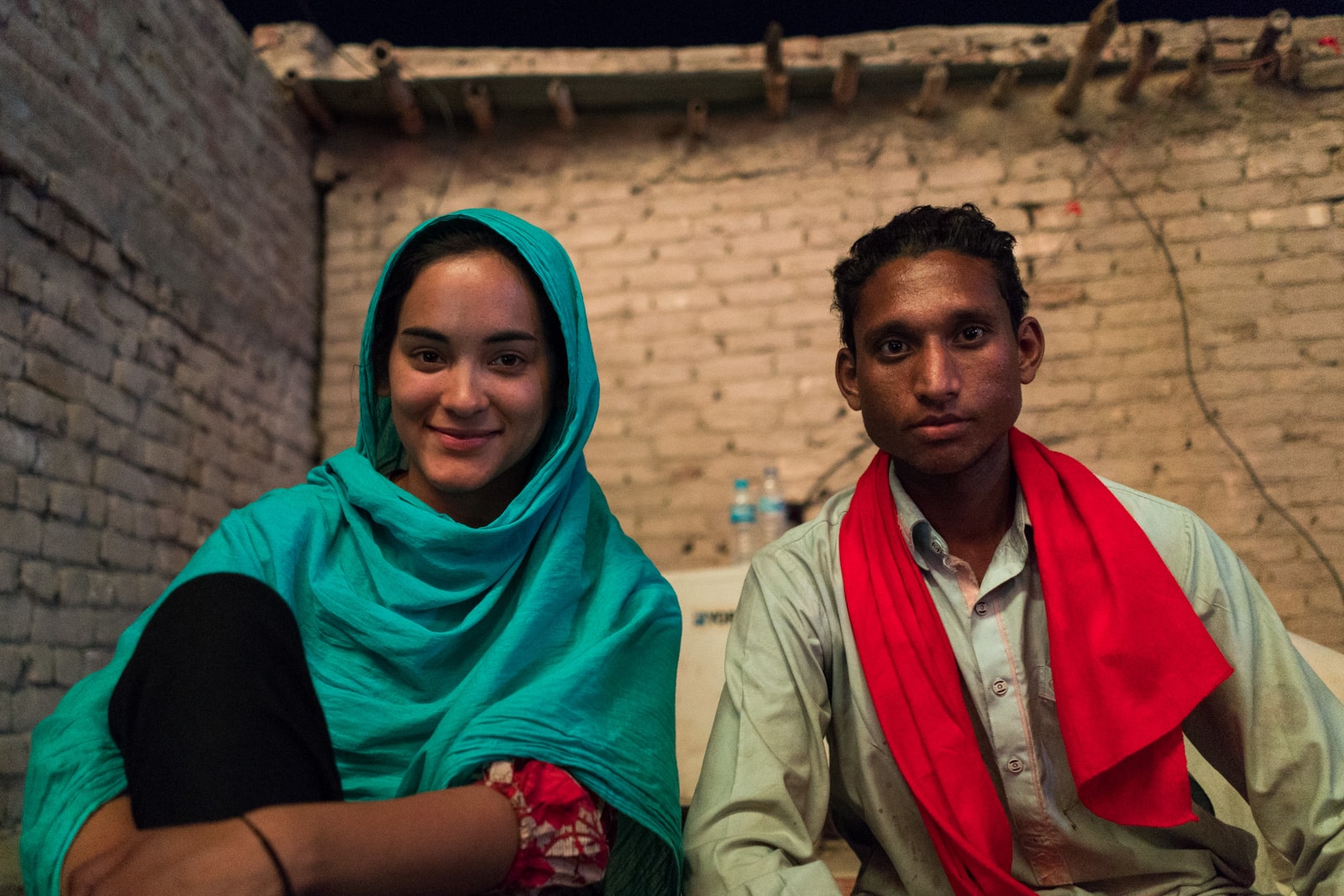
Me and my self-appointed local bodyguard for the mela, Amjed
Female travel to the urs of Lal Shahbaz Qalandar
A final note to my fellow lady travelers interested in visiting the urs!
If you’re heading to the urs, be sure to keep things conservative and be careful. Not to stereotype, but the crowd at the festival is primarily from villages and the poorer levels of society—they’re not used to girls traveling so freely, especially women traveling alone. Let’s just say this is not the most charming place to be a female traveler.
I visited the urs with a group of male friends, and even then, other men were uncomfortable at times, occasionally following me or filming me. One evening, I wandered around without hijab, and boy oh boy, was that a delightful experience (sarcasm—I haven’t been stared at so much since Bangladesh).
Make sure to dress conservatively; salwar kameez and a headscarf is highly recommended both inside and outside the shrine. Short sleeves are a definite no. Be cautious with men who speak to you—especially young bachelors—and lock your doors at night to prevent creepers wandering in.
Read more: Is it safe to travel as a woman in Pakistan?
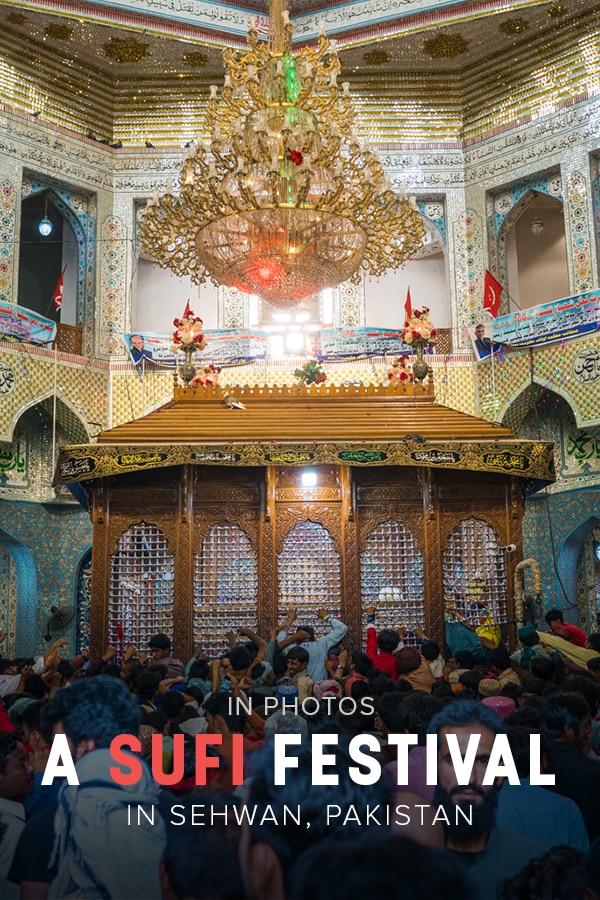
Yay transparency! There are affiliate links in this post. If you buy something using my links, I’ll make a bit of change at no extra cost to you, and also love you forever.



Thank you for writing this gem on Sehwan. The only marvelous detailed piece on the internet about ‘Urs’. Also, thank you for visiting Sindh.
Peace!
Sarfaraz
Karachi-Larkana, Pakistan
God this is just awesome. The crazy trippy colors of the totally and completely overloaded buses, mounds of sweets, countless modes of transportation, face-painted goats, seas of shirtless men, and the absolute poignancy you capture in the eyes of those you photograph – all of it, so so cool. Have you entered all the past times you’ve visited Pakistan on the Tour Group Visa?
Love this place. It’s like all of humanity comes together and is welcome there. I haven’t visited during the urs before, but it’s definitely on the list. Thank you for sharing – an inspiring post 🙂
Thanks for sharing all of your experience and these gorgeous photos. Sounds amazing.
Hi,
Loved your article; can you tell me if you know anything about how dhamaals are conducted outside of the Urs period.
On a normal day, would we able to see something like that (albeit on a smaller scale) on a Saturday?
Thanks for sharing your amazing experience , it was very helpful. I will visit during urs of 2019 . I am intoxicated by the Qalanlder, Qalander Jhulay Lal .
Hi I am highly interested in going to that festival since I saw a German documentary about it. For safety reasons we (a couple) want to hire a private driver fluent in English who also will act as a guide. Is there a trustworthy company where I can get such a person? Do anybody know the estimate costs for such a service during?
Thanks
Hey Alex, I’m back in Pakistan, Karachi this time. Planning on going to Sewan this spring, your write up will really be helpful.
Stay safe,
Abid